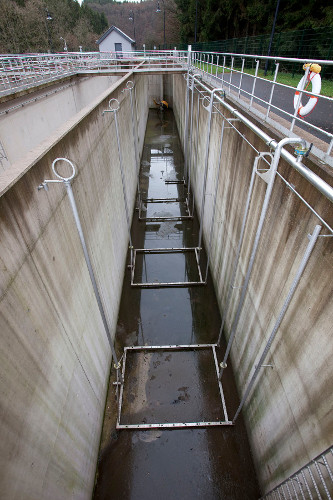 The Problem:
The Problem:
Sewage systems are designed and built using models to assess annual rain fall and by using specific population growth curves. Once the sewer system has been built however, these standard operating assumptions may not reflect the actual day-to-day operational conditions of the plant. For example, rain does not usually fall uniformly in a geographical area and this can mean that some CSO tanks in the system are over-stressed while others a few kilometers away continue to operate without “knowing” that their output will soon contribute to overwhelming the Waste Water Treatment Plant (WWTP). Wouldn't a better solution be to continuously coordinate CSO tanks so that by working together they are used more efficiently? And how do you minimize sewage overflows while ensuring that your plant’s physical assets are not put at risk due to overloading? How can you manage maintenance work or mechanical failure issues while allowing the rest of the sewage system to function optimally?
Our Solution:
RTC4Water has developed an intelligent automation and prediction software application that goes beyond quality driven control and system modelling. Our tool provides proactive network management 24/7 and automatically adapts to network changes or emergencies – a “hands off” software tool that requires no special training or IT resources. We have seen that this approach not only reduces long-term operational costs and extends plant life, but more importantly releases your staff to focus on more critical tasks.
How it works:
RTC4Water has developed a software tool called the Global Predictive Controller™ – or GPC for short. Once your network has been analyzed and modeled, we create a GPC tool specifically for your waste water network. The software runs locally at your site and you have full control over its use. This application runs independently 24 hours a day / 7 days a week and continuously analyzes your network. It uses special algorithms to assess CSO utilization and then automatically determines the most efficient waste water distribution solution based on current conditions. The GPC is designed to always calculate the most efficient use of your existing infrastructure and then provide your control systems with recommendations to maintain this level of performance. Software updates and maintenance can be performed remotely if required.
How we work with our clients:
1. The first step is to understand our client’s specific needs and goals. We then develop a step-by-step project proposal where the client can clearly determine the project’s deliverables and assess progress.
2. Next, we model your WWTP network using software tools that have been tested and validated by both academic and industry professionals. This model provides the foundation for the development of the GPC software tool.
3. We then develop a control strategy based on your needs and goals. Optimization algorithms are applied and a testing environment is developed to validate the GPC’s operating parameters. These algorithms are based on a mathematical optimization, meaning that our system always finds the best solution to a proposed problem.
4. Then, in three carefully monitored stages, we install the GPC onto your system and insure that it works as designed. Training can be provided but most of our clients find that this is not needed.
5. Finally, we monitor the software remotely for 6 months to iron out any unwanted behavior. Our experience has shown that your staff may need some time to learn to trust our system and some small changes to the control strategy may be necessary.
For more information on actual installations and the cost benefits for your clients, please go to our Customer section.
If you would like to contact us to obtain more technical information, please click here.





